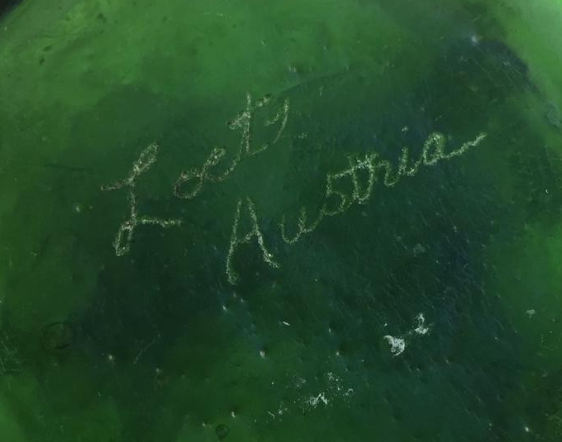


Johann Loetz Witwe (also known as Joh. Loetz Witwe or Joh. Lötz Witwe) was a leading producer of artistic glass, founded in Klostermühle (now part of Rejštejn) in southwestern Bohemia, Austro-Hungary, and later Czechoslovakia. The company was one of the foremost examples of Art Nouveau, particularly renowned for its innovative approach to artistic glass.
The company’s history dates back to 1850 when Zuzanna Loetz, the widow of Johann Loetz, established a glassworks in the Otava Valley, in the Bohemian Forest. In 1879, the company was taken over by Max Ritter von Spaun, the grandson of the founder, who continued the business under the name "Joh. Lötz Witwe." The company gained international recognition for producing colored and polished glass, known for its purity, vibrant colors, and unique iridescent effects. Johann Loetz Witwe was a pioneer in the production of so-called "baroque glass," which featured applied glass decorations.
The company’s products were showcased at numerous international exhibitions, winning prestigious awards, including the Grand Prix in Paris (1889) and the Prix de Progrès in 1888. Among the distinguished works was the Kaiser Franz Josefs vase, which became a symbol of the company’s craftsmanship. Loetz glass mimicked onyx, jasper, malachite, and other precious stones, giving it a distinctive character that made it highly sought after on the market.
The company collaborated with renowned artists such as Josef Hoffmann, Koloman Moser, and the Wiener Werkstätte group. Loetz also partnered with other esteemed glass manufacturers, including J. & L. Lobmeyr and E. Bakalowits Söhne.
However, after the outbreak of World War I and the political changes in the region, the company began to experience difficulties. The ultimate decline occurred after World War II, when much of the German-speaking population, including many workers, was expelled from Czechoslovakia, effectively ending the operations of Johann Loetz Witwe.
Today, glass produced by Loetz is highly prized by collectors worldwide, and the company remains one of the most prominent representatives of Art Nouveau glass design.